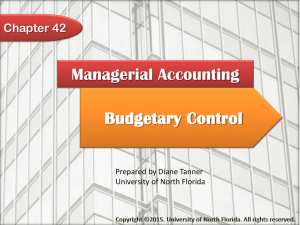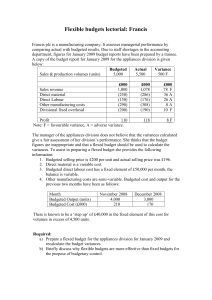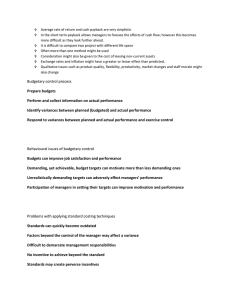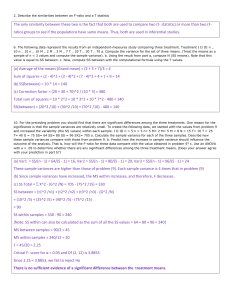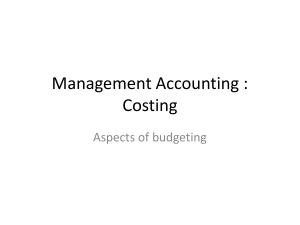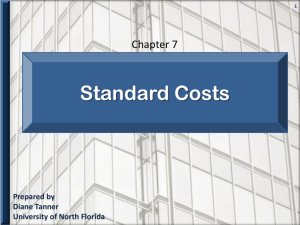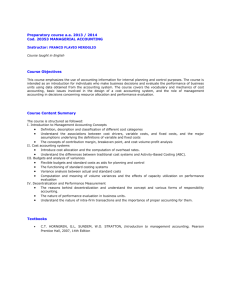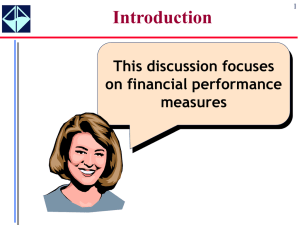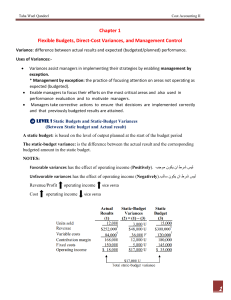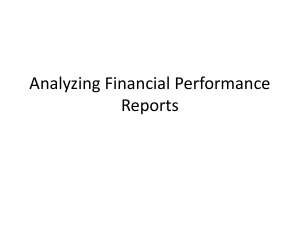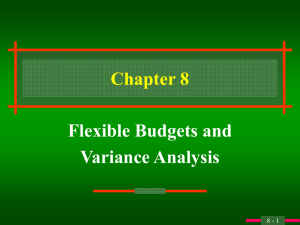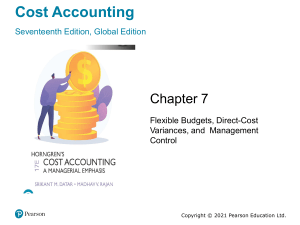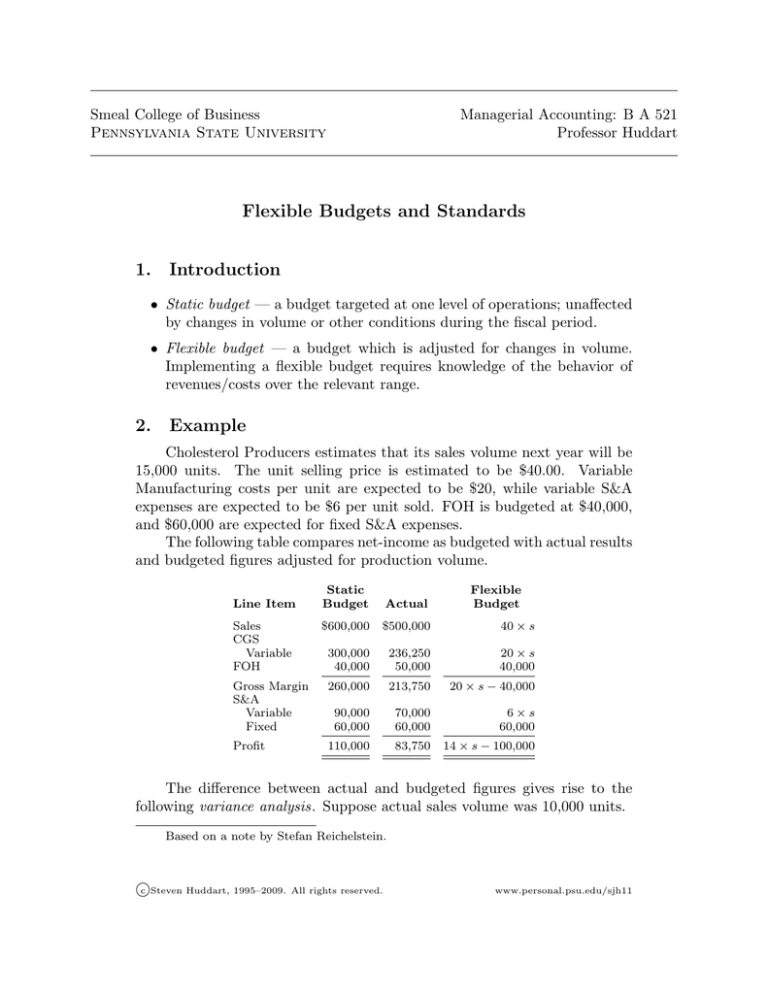
Smeal College of Business
Pennsylvania State University
Managerial Accounting: B A 521
Professor Huddart
Flexible Budgets and Standards
1.
Introduction
• Static budget — a budget targeted at one level of operations; unaffected
by changes in volume or other conditions during the fiscal period.
• Flexible budget — a budget which is adjusted for changes in volume.
Implementing a flexible budget requires knowledge of the behavior of
revenues/costs over the relevant range.
2.
Example
Cholesterol Producers estimates that its sales volume next year will be
15,000 units. The unit selling price is estimated to be $40.00. Variable
Manufacturing costs per unit are expected to be $20, while variable S&A
expenses are expected to be $6 per unit sold. FOH is budgeted at $40,000,
and $60,000 are expected for fixed S&A expenses.
The following table compares net-income as budgeted with actual results
and budgeted figures adjusted for production volume.
Static
Budget
Actual
$600,000
$500,000
40 × s
300,000
40,000
236,250
50,000
20 × s
40,000
Gross Margin
S&A
Variable
Fixed
260,000
213,750
20 × s − 40,000
90,000
60,000
70,000
60,000
6×s
60,000
Profit
110,000
83,750
14 × s − 100,000
Line Item
Sales
CGS
Variable
FOH
Flexible
Budget
The difference between actual and budgeted figures gives rise to the
following variance analysis. Suppose actual sales volume was 10,000 units.
Based on a note by Stefan Reichelstein.
c Steven Huddart, 1995–2009.
!
All rights reserved.
www.personal.psu.edu/sjh11
B A 521
3.
4.
Flexible Budgets and Standards
Process
Level 0:
Compare actual profit to static budget profit.
83,750 − 110,000 = 26,250 (U)
Level 1:
Compare actual line items to static budget line items.
Example: Sales
500,000 − 600,000 = 100,000 (U)
Level 2a:
Compare flexible budget at actual sales volume to static
budget for each line item. These differences are called sales
volume variances.
Example: Sales
400,000 − 600,000 = 200,000 (U)
Level 2b:
Compare flexible budget at actual sales volume to actual
results for each line item. These differences are called flexible
budget variances.
Example: Sales
400,000 − 500,000 = 100,000 (F)
Level 3:
Further detailed breakdown of the above Flexible budget
variances into price and efficiency variances.
Example
Suppose the following standards apply for direct material prices and
quantities:
Direct Materials
:
2.5 lbs./unit @ $4.00/lb.
The actual figures were:
Purchases of DM : 30,000 lbs. @ $3.50/lb.
Usage of DM : 28,000 lbs.
Units Manufactured : 12,000
Required: Break the flexible budget variance for Direct Materials into
price and efficiency variances according to the formulae:
Page 2
Flexible Budgets and Standards
B A 521
VB = Vp + Ve
Vp = (AP − SP ) × AQ
Ve = (AQ − SQ) × SP
VB = AP × AQ − SQ × SP
Note:
SQ = (Actual output produced) × (Standard input allowance per unit of output)
Price
Price
AP
SP
Vp
Vp
SP
AP
Ve
Ve
SQ
AQ
AQ
Quantity
(a)
Price
Quantity
AQ
Quantity
(b)
Price
AP
SQ
SP
Vp
Vp
SP
AP
Ve
AQ
Ve
SQ
SQ
Quantity
(c)
(d)
Figure 1
Page 3
B A 521
5.
Flexible Budgets and Standards
Ledger Procedure Under Standard Costing
Raw Materials
(SP )(QP )
(SP )(AQ)
Work in Progress
DM − (SP )(SQ)
DL − (SP )(SQ)
V OH − (SRv )(SQ)
CoGM at standard
F OH − (SRf )(SQ)
where QP is the quantity purchased.
Journal Entries for Direct Materials
1. Purchase of materials:
Raw Materials Inventory
(SP )(QP )
Accounts Payable
(AP )(QP )
∗
reconciling entry is to Materials Price Variance
2. Add DM to production
Work in Progress
(SP )(SQ)
Raw Material Inventory
(SP )(AQ)
∗
reconciling entry is to Materials Efficiency Variance
Journal Entries for Direct Labor
∗
Work in Progress
(SP )(SQ)
Factory Payroll
(AP )(AQ)
reconciling entry is to Labor Rate Variance and Labor Efficiency Variance
Journal Entries for Overhead
Work in Progress
Applied OH
OH Control
Accounts Payable
Page 4
(SR)(SQ)
(SR)(SQ)
Actual
Actual

